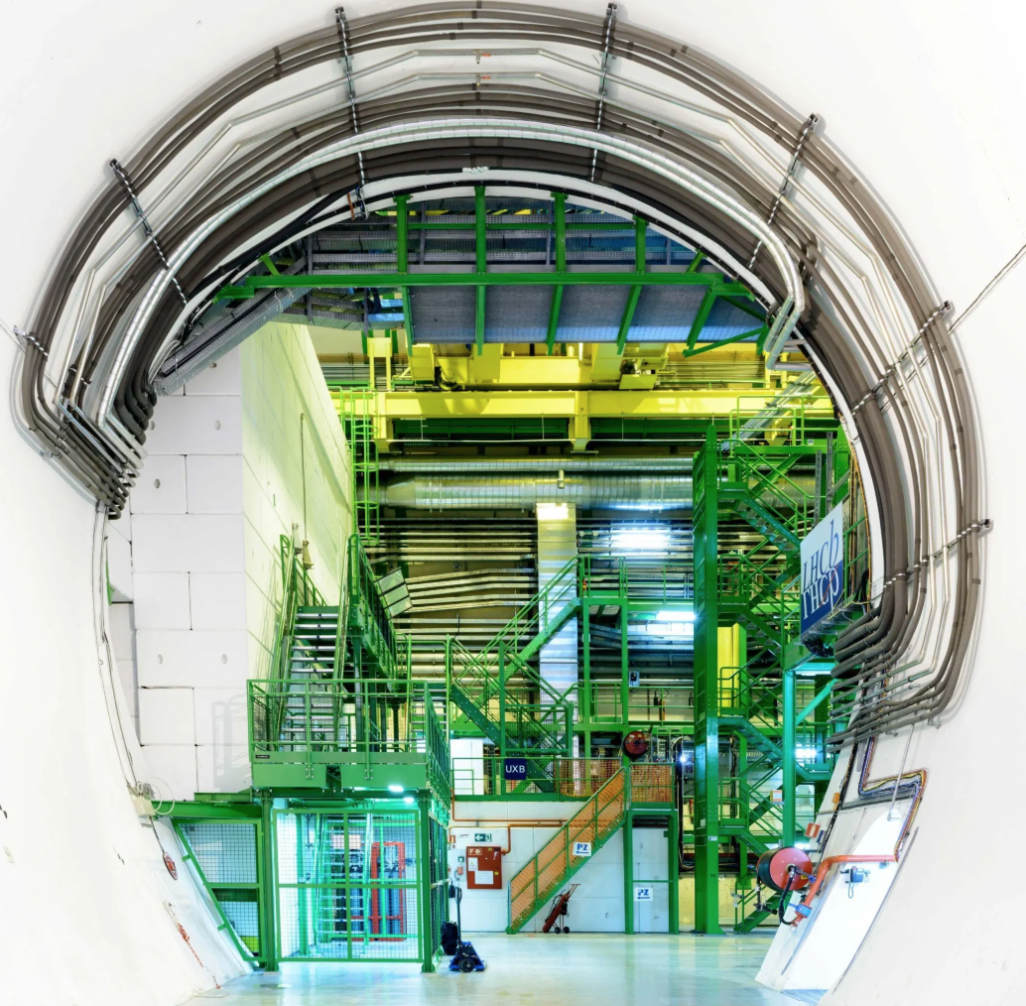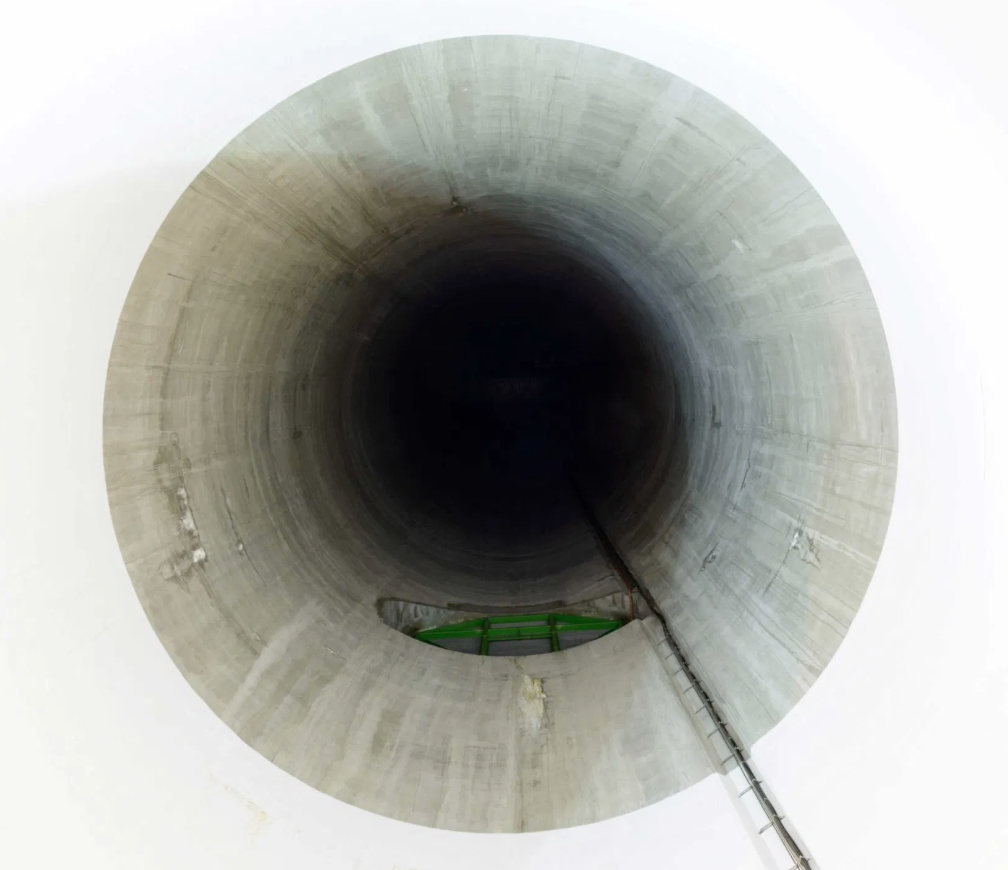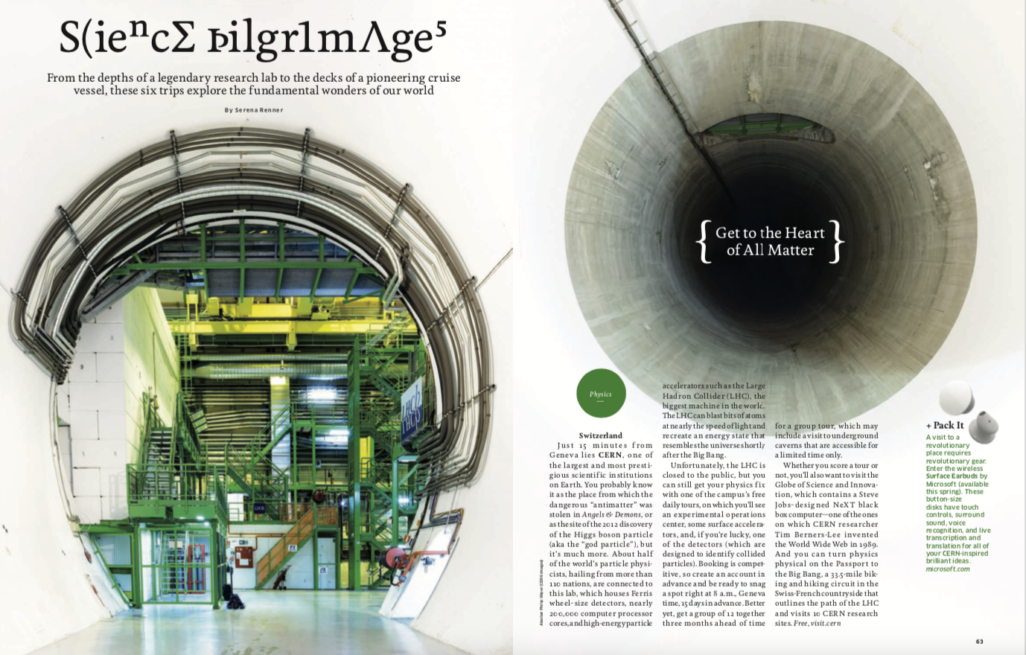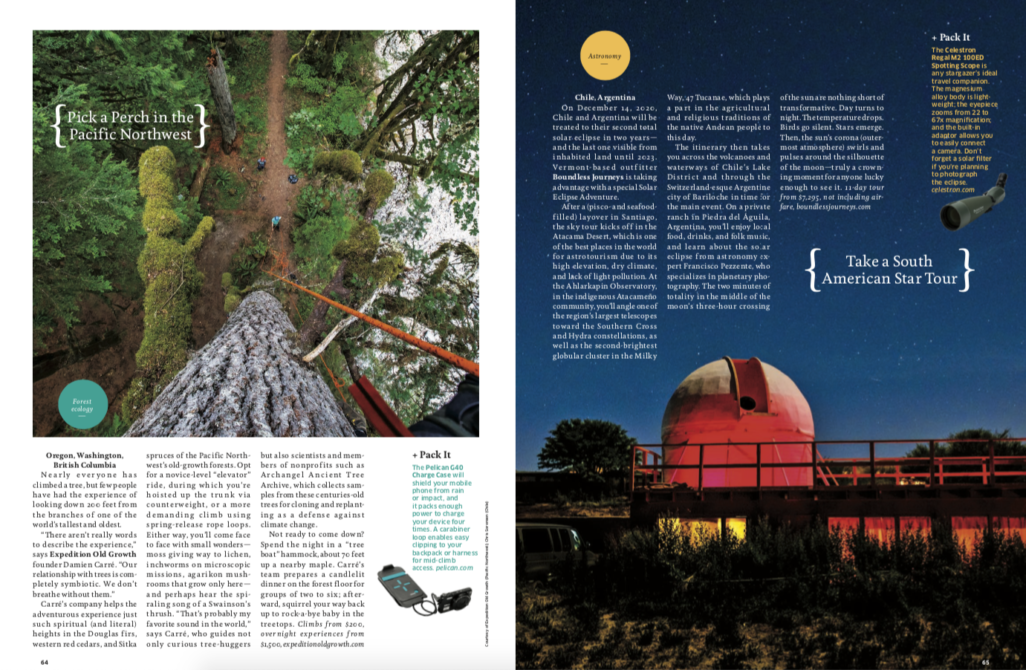
Photo: Alastair Philip Wiper (CERN Images)
From the depths of a legendary research lab to the decks of a pioneering cruise vessel, these six trips explore the fundamental wonders of our world.
1. Get to the Heart of All Matter
SWITZERLAND
Just 15 minutes from Geneva lies CERN, one of the largest and most prestigious scientific institutions on Earth. You probably know it as the place from which the dangerous “antimatter” was stolen in Angels & Demons, or as the site of the 2012 discovery of the Higgs boson particle (aka the “god particle”), but it’s much more. About half of the world’s particle physicists, hailing from more than 110 nations, are connected to this lab, which houses Ferris wheel–size detectors, nearly 200,000 computer processor cores, and high-energy particle accelerators such as the Large Hadron Collider (LHC), the biggest machine in the world. The LHC can blast bits of atoms at nearly the speed of light and recreate an energy state that resembles the universe shortly after the Big Bang.

Photo: Alastair Philip Wiper (CERN Images)
Unfortunately, the LHC is closed to the public, but you can still get your physics fix with one of the campus’s free daily tours, on which you’ll see an experimental operations center, some surface accelerators, and, if you’re lucky, one of the detectors (which are designed to identify collided particles). Booking is competitive, so create an account in advance and be ready to snag a spot right at 8 a.m., Geneva time, 15 days in advance. Better yet, get a group of 12 together three months ahead of time for a group tour, which may include a visit to underground caverns that are accessible for a limited time only.
Whether you score a tour or not, you’ll also want to visit the Globe of Science and Innovation, which contains a Steve Jobs–designed NeXT black box computer—one of the ones on which CERN researcher Tim Berners-Lee invented the World Wide Web in 1989. And you can turn physics physical on the Passport to the Big Bang, a 33.5-mile biking and hiking circuit in the Swiss-French countryside that outlines the path of the LHC and visits 10 CERN research sites.
(For the full story, read the online version here, or check out the PDF. Published in the February 2020 issue of Hemispheres).

